








- TOP
- Traditional Performing Arts
In Kumamoto, many traditional performance arts have been handed down since the Edo period,
and these are still very much a part of Kumamoto culture today.
-
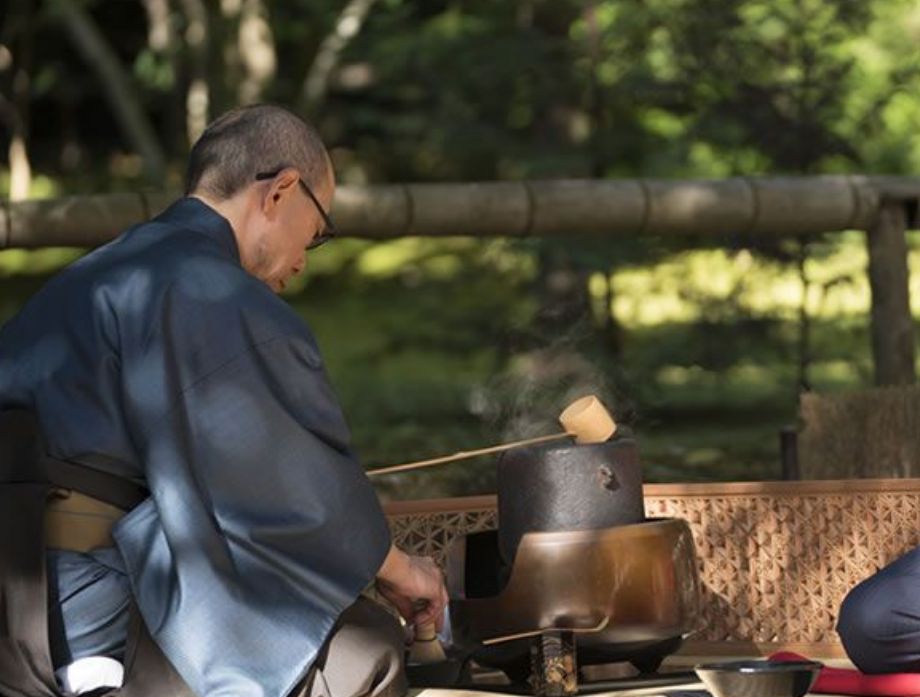
Picture: Traditional Performing Arts Photography;
Shigeto KenichiHigo-Koryu Sado (Higo Old School Tea Ceremony)
The Higo-koryu school of tea ceremony stands out because it uses the exact same methods created by famous tea master, Sen no Rikyu, to this day. As one of the seven disciples of Rikyu, the second generation Hosokawa clan daimyo, Hosokawa Tadaoki, strictly adhered to his teacher's rules. Later, Furuichi Soan (Rikyu's grandson-in-law), who founded the Higo-koryu school, was invited by third generation daimyo Hosokawa Tadatoshi to serve as a tea master for the Hosokawa clan. Even now Soan’s teachings are still being passed down by the three families.
-
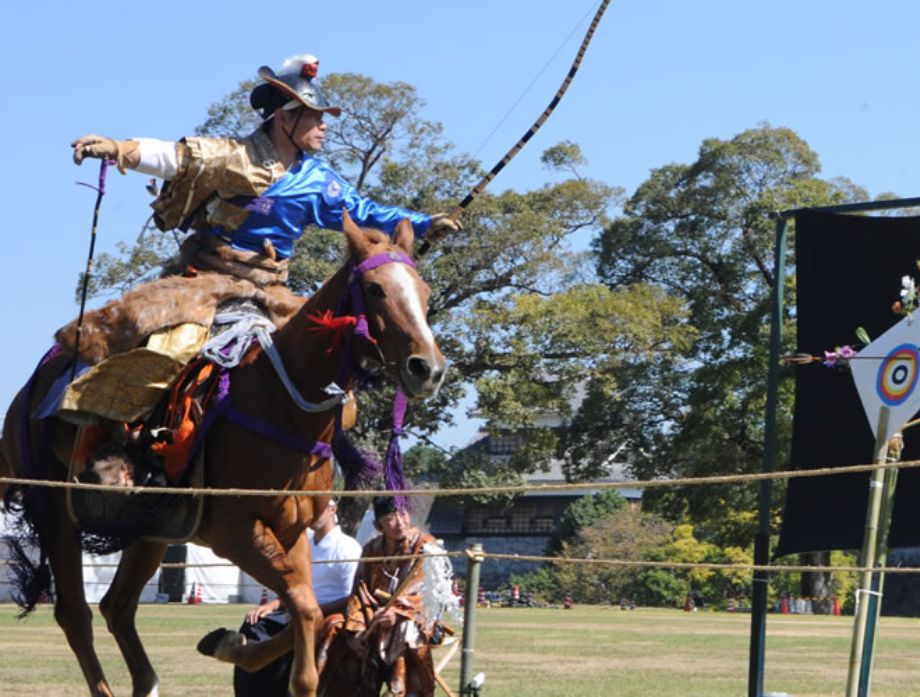
Takeda-Ryu (Hosokawa-Ryu)
Kisha Yabusame (Takeda- (or Hosokawa-) Style Equestrian Archery)Takeda Nobunao, the last of the Takedashi clan that created the Takeda-ryu style of kisha yabusame equestrian archery, happened to be Hosokawa Fujitaka's nephew. For this reason, Nobunao taught the Takeda-ryu style (now also known as the Hosokawa-ryu style) to Fujitaka and his son Tadaoki, Tadaoki handed the skill down to his retainer Takehara, and the tradition continues to this day.
These days, equestrian archery is performed with three targets that are shot at from a moving horse with jindoya arrows (arrows affixed with a hard piece of wood at the tip to destroy rather than puncture their target).
Takeda-ryu style equestrian archery is an important part of Kumamoto culture, and it is featured prominently in demonstrations at Ninomaru Park during castle festivals and performances put on as offerings at Izumi Shrine. -
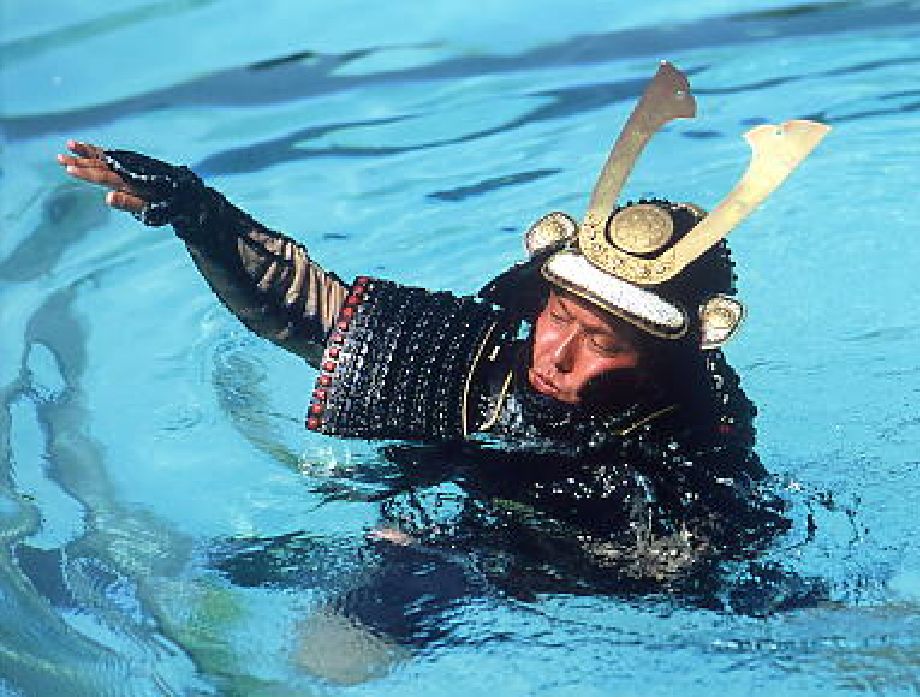
Kobori-Ryu Treading Water Technique
Kobori-ryu is a method of swimming in a vertical position that was created in Kumamoto during the Edo period as a military exercise. It was one of the essential martial arts of the domain-run school, Jishukan.
Kobori-ryu is most famous for a treading water technique performed by swimmers that makes it look as though they are walking, but also includes techniques to tread water in full armor as well as performative skills like doing calligraphy, kendo sword fighting, shooting, or archery all while treading water.
Kobori-ryu swimming arts continue to be passed down and are considered an Important Intangible Cultural Asset of Kumamoto Prefecture. -
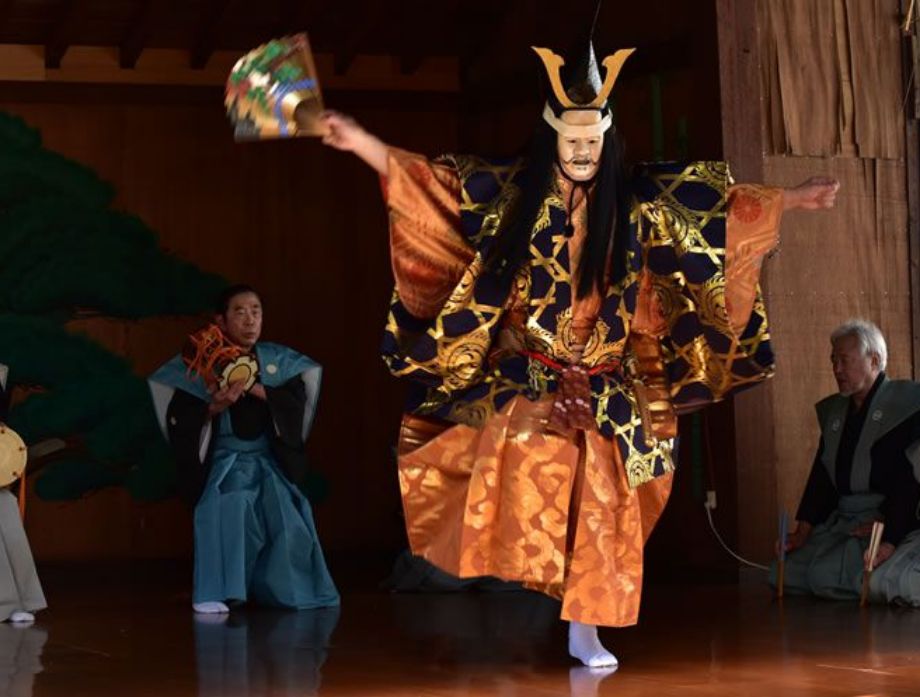
Nogaku
An Important Intangible Cultural Property of Japan and UNESCO World Heritage, Nogaku (also known as Noh) is a traditional Japanese performing art representative of Japan. In Kumamoto, this tradition was carefully preserved by Kato Kiyomasa and the Hosokawa Clan. At Fujisaki-Hachimangu Shrine festivals, Nogaku performances are put on as dedications at the otabisho (resting place for gods on the way to the shrine). Takigi Noh plays (evening torchlight-illuminated performances) are also put on at Izumi Shrine, which goes to show how Noh is still deeply entrenched in Kumamoto culture.
-
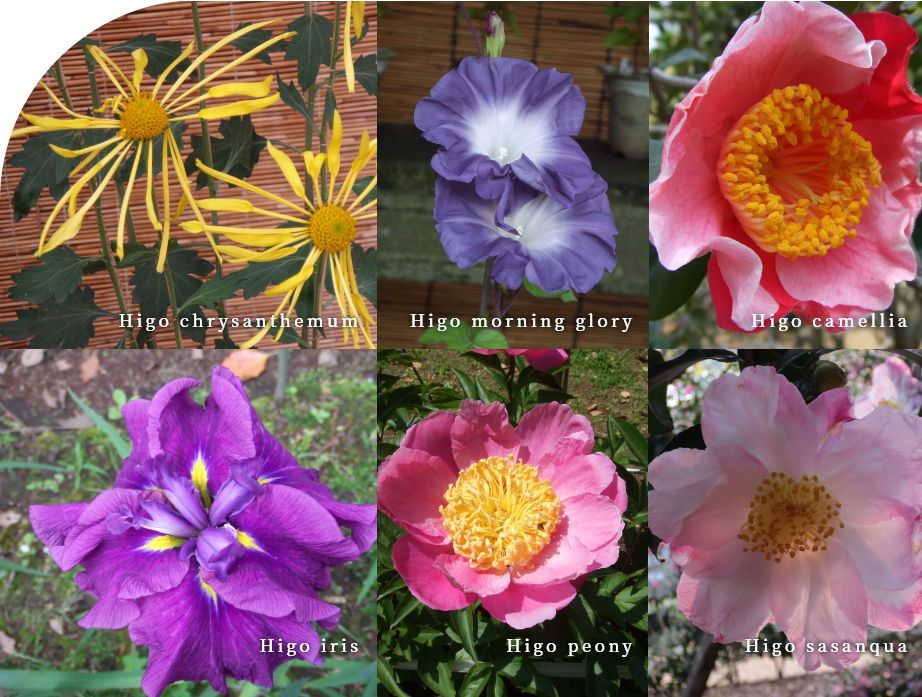
Higo Rokka(Six Traditional Flowers of Higo)
The six traditional flowers of Higo are: Higo camellia, Higo peony, Higo iris, Higo morning glory, Higo chrysanthemum and Higo sasanqua. These flowers all share a flat, large, and circular appearance with a beautiful center. Flowers with a solid color and no cloudiness are considered ideal.
The six flowers of Higo came to be during the era of Hosokawa Shigekata, when their cultivation was encouraged as a part of samurai culture, and each of these varieties have been closely protected and passed down. -
Shishi-mai(Lion Dance)
This event continues the lion dance traditions of the Shinmachi, Owatari, and Mutaguchi areas. Among these traditions, the lion dance of Shinmachi boasts a history stretching back 400 years. The sight of dancing red and gold lions is one of the highlights of the Fujisaki Hachimangu Shrine Festivals.
-
Higo Kagura Dances
Although Higo Kagura dances are performed all over Kumamoto City, most are unmasked and performed with props. Kunitsu is the only district where chaku-men, or masked dances, are held. Handed down from one generation to the next, Kagura dances were originally performed by Shinto priests, but since the Meiji era, they have been danced by disciples in every region of Kumamoto. This tradition continues being handed down in ten areas throughout the city and are performed as offerings at a variety of shrines.
There are many other places besides those listed here where you can deeply immerse yourself in the history and culture of Kumamoto.
Use the link below to jump to the Sightseeing Search Page, where you can try out a keyword search!


